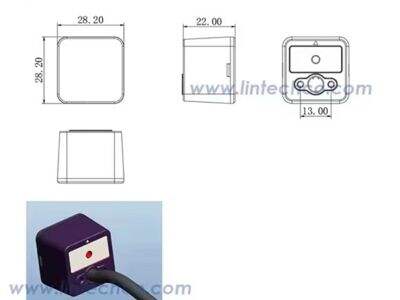Radar sensor liquid level sensors are tools that, among other things, allow us to measure how much liquid is in tanks. But occasionally they can give us wrong readings. This is frustrating, but there are ways to figure out what’s going on.
Identify The Most Common Factors Of False Readings On Radar Liquid Level Sensors
One of the most common reasons for reading false measurements is improper sensor installation. It can provide us the wrong readings if we don’t install the radar sensor at the correct angle or too near the tank wall. There is also the fluid obstruction on the sensor signal. This can occur if there is foam or debris in the tank or if objects obstruct the sensor's view.
How to Troubleshoot Radar Level Sensor Errors, the Ultimate Checklist
Is your radar liquid level sensor giving you inaccurate readings? There are a few things you can do to resolve the issue. Firstly, ensure the sensor is correctly installed, and nothing is in its way in front of it. If you there are no visible problems, try cleaning the sensor.
If cleaning the sensor doesn’t do the trick, you can attempt to recalibrate it. This comprises setting the sensor level so it reads the liquid level properly. Worst case scenario you'll need to get someone to help you.
Calibrating Radar Liquid Level Sensors — How to Calibrate Radar Level Sensors to Ensure Correct Readings?
The calibration process the radar liquid level sensor is essential in terms of us trusting the values we read from them. To calibrate a sensor, you will need to tinker with its settings: You want to make sure it’s accurately measuring how much liquid is in the tank. This includes setting the angles, distances, and other characteristics of the sensor similar to the way in which the tank is actually shaped.
If you want to calibrate a sensor the right way, you’re going to have to pay attention to the manufacturer’s instructions. It’s also vital to recalibrate the sensor often, to ensure that it still provides accurate readings after it’s been in place for a long time.
Interference & Obstruction Resolution in the Radar Tank Gauge Reading Can
Sometimes, the radar liquid level sensor cannot provide accurate reading because of the interference impact or something else stuck to it. Interference may be due to other electronic devices or radio interference that interfere with the sensor signal. Blockages might be from something like foam, or dirt or other material that is preventing the sensor from seeing the liquid.
How to Deal with the Inaccuracy of Radar Liquid Level Sensors?
Sometimes interference and obstacles can be overcome by shielding the sensor from external influences or through tank cleaning in the case of obstacles. Also try relocating the sensor if you can, in case that helps.
Table of Contents
- Identify The Most Common Factors Of False Readings On Radar Liquid Level Sensors
- How to Troubleshoot Radar Level Sensor Errors, the Ultimate Checklist
- Calibrating Radar Liquid Level Sensors — How to Calibrate Radar Level Sensors to Ensure Correct Readings?
- Interference & Obstruction Resolution in the Radar Tank Gauge Reading Can
- How to Deal with the Inaccuracy of Radar Liquid Level Sensors?

 EN
EN
 AR
AR
 HR
HR
 CS
CS
 DA
DA
 NL
NL
 FI
FI
 FR
FR
 DE
DE
 EL
EL
 IT
IT
 JA
JA
 KO
KO
 NO
NO
 PL
PL
 PT
PT
 RO
RO
 RU
RU
 ES
ES
 SV
SV
 IW
IW
 ID
ID
 LV
LV
 LT
LT
 SR
SR
 SK
SK
 SL
SL
 UK
UK
 SQ
SQ
 ET
ET
 HU
HU
 TH
TH
 TR
TR
 FA
FA
 AF
AF
 MK
MK
 KA
KA
 UR
UR
 BN
BN
